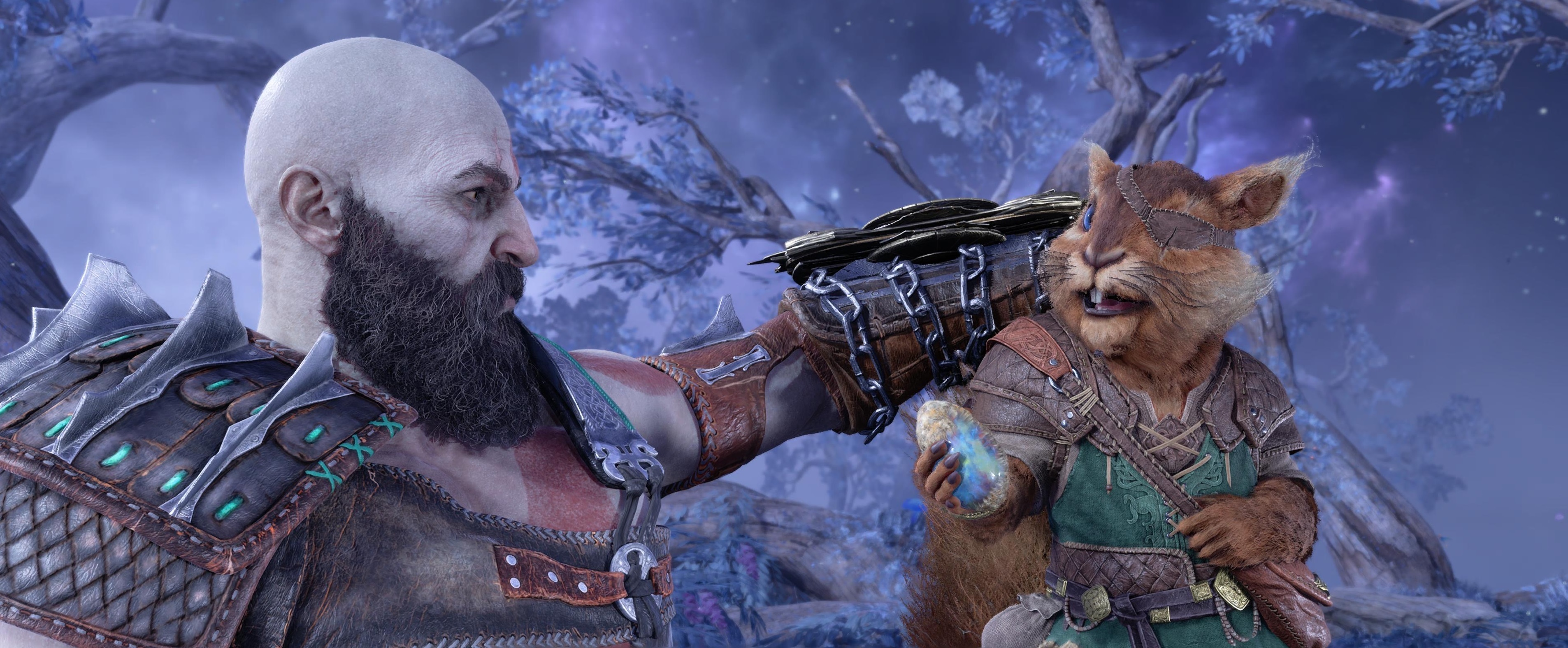Big sandboxes, semi-open world
Sony has made it clear that God of War Ragnarok is going to follow up the 2018 hit in many ways: I’m sure some of you out there are wondering if the sequel is truly open world. It’s not!
Just like the 2018 game, God of War Ragnarok can be best explained as a set of “semi-open” sandboxes, which create an open experience; without having a pin-laden true fully open map. Instead of using a table to teleport around you’ll utilize doors: which contain the ability to warp to different portions of each map (game world). Think of them like good old fashioned fast travel points, and you’ll have a good idea of how the game’s flow will play out across the 20+ hour runtime.
Several of the larger zones contain vehicles of a sort to get around with (like sled wolves or boats), including the starting area where Kratos and Atreus call home. These are also baked into the game as exposition-heavy story sequences, where rowing down a river or racing through a snow bank largely serve as ways for characters to talk to one another during downtime.
In any case, said sandboxes do feel very full without feeling needlessly packed. The refusal to adhere to the traditional AAA open world formula works out in Ragnarok‘s favor, just like it did with the 2018 iteration. We get room to let these characters breathe, while providing enough stuff to do that’s off the beaten path. In many ways it’s the best of both worlds, in an era full of AAA bloat.


